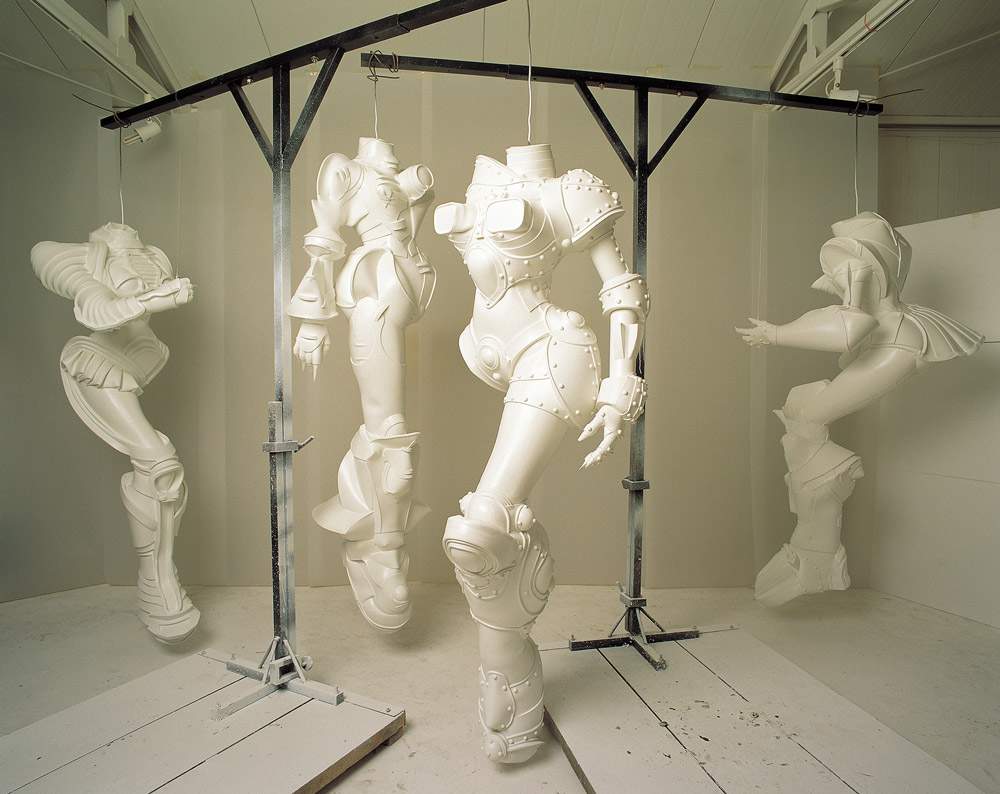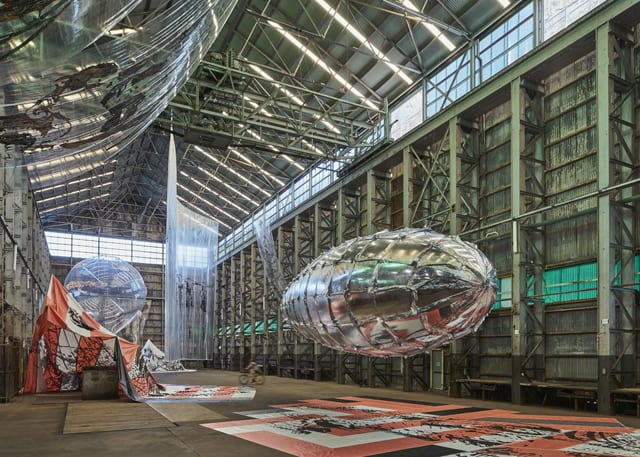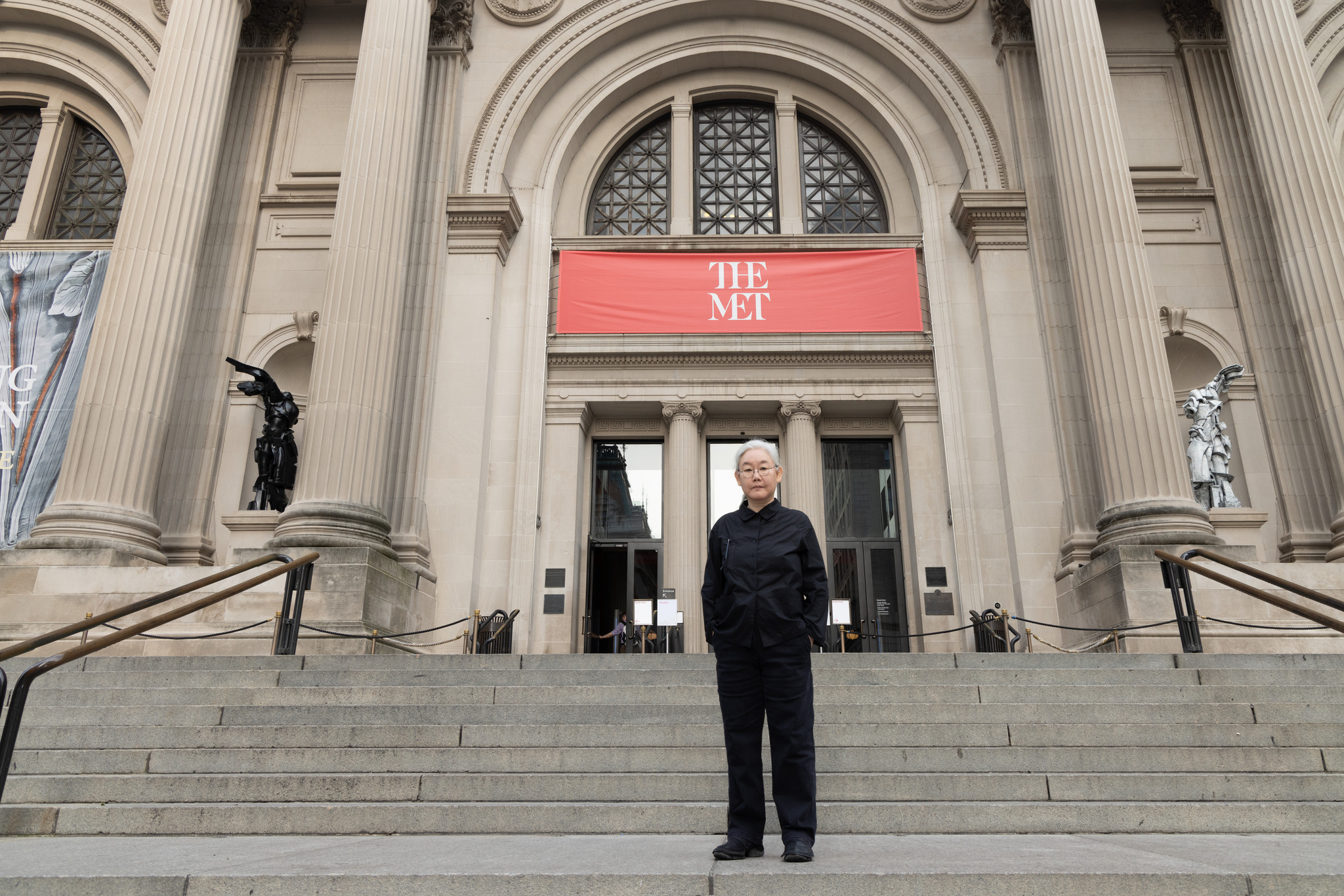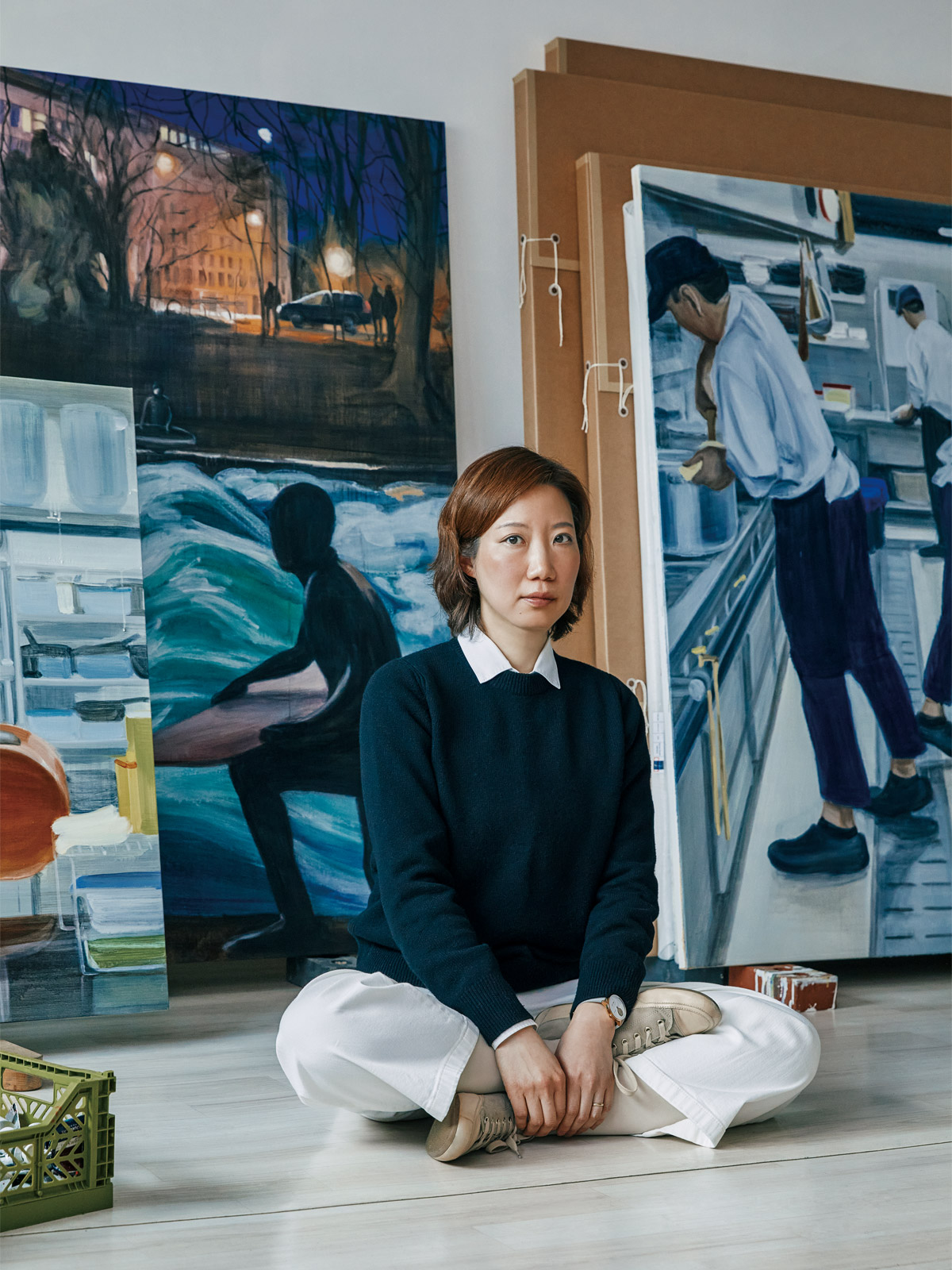Lee Bul (b. 1964)’s narrative is reflected in her works through sharp social criticism, historical consciousness, and a search for utopian humanism. The artist draws inspiration from diverse sources – including film, literature and modern architecture, as well as European and South Korean history – to create hybrid forms that convey a fantastical and often disconcerting dystopian vision.

Lee Bul, Sorry for Suffering – You Think I’m a Puppy on a Picnic?, 1990 ©Seoul Museum of Art
Born in 1964 to dissident parents under the military dictatorship of Park Chung-Hee in South Korea, Lee Bul began her career with public performances that positioned her own body as both subject and object of the work since the late 1980s. These performances channelled the personal and emotional impact of political persecution and restrictive gender roles into visual form.
For example, the performance work Sorry for Suffering – You Think I’m a Puppy on a Picnic?, in which the artist walked around Seoul and Tokyo for 12 days dressed as a monster-like “soft sculpture” with multiple tentacles, is one of the most talked about works in which the artist’s body became the subject of the work.

Lee Bul, Majestic Splendor, 1997 Photo: Robert Puglisi ©Studio Lee Bul
Majestic Splendor also is another iconic work that made her mark in the art world. Presented in a 1997 exhibition at the Museum of Modern Art in New York City, the installation consisted of 98 lavishly decorated raw fish sealed in a clear plastic bag, a commentary on the fleeting nature of beauty and the powerlessness of women.
The foul odor from the decaying fish eventually led to the work’s removal on the eve of its opening, but the work was noticed by the world-renowned curator Harald Szeemann and was an important step in bringing the quilt to the attention of the European art world. Lee was then invited to participate in the 4th Lyon Biennale, where Lee was able to present Majestic Splendor, which showed the slow decay of the fish over the course of the exhibition, and gained the attention of the international art world.

Lee Bul, Cyborg W1-W4, 1998 Photo: Yoon Hyung-moon ©Lee Bul and Art Sonje Center
Lee’s Cyborg series begins with the familiar image of cyborgs commonly found in anime and movies. However, instead of having intact bodies, her cyborgs take on abnormal forms with missing body parts or amputated limbs.
Constructed in the form of a sexualized, anatomically shapeless robot, it alludes to the desires and anxieties surrounding genetic engineering, cloning, and plastic surgery. The silicone used in her early cyborgs—a material often used as a prosthesis in plastic surgery—alludes to women’s desires for the idealized body or the male gaze upon it.
These cyborgs, suspended in mid-air with missing heads and limbs, question our myth of technological perfection, which we often believe will augment the human body and open new hopes for humanity. Her works maintain a close connection to her earliest endeavors, challenging the paternalistic social hierarchy that underlies art, culture, and technology, and provoking a subversion of this structure.

Lee Bul, Willing To Be Vulnerable, 2015–16, Installation view at 20th biennale of Sydney ©Thaddeus Ropac
Since the mid-2000s, Lee has been creating large-scale installations that metaphorically represent modern idealism. Willing To Be Vulnerable, which takes the shape of a giant silver airship, is based on the Hindenburg disaster, an airship accident that caused 35 fatalities in May 1937. The work refers to the Hindenburg airship, a symbol of modernity in the early 20th century, and projects humanity’s desire for utopia through the advancement of science and technology at the time.
At the same time, the artist describes it as “a work that shows the human destiny of trying, failing, and trying again, which is inevitable. It reminds us that we are vulnerable and imperfect beings with the desire to move forward, but we still try. Lee’s work straddles this line between beauty and horror, vulnerability and strength. Her work, with its mixture of hope and despair, invites us to reflect on ourselves and the world around us.
“I choose what I work with very carefully. Everything has connotations, stories and I utilise them. I borrow the general meanings materials have and embrace them in my work. Many times, things have clashing, conflicting connotations or layers of meanings.”
 Artist Lee Bul ©Thaddeus Ropac
Artist Lee Bul ©Thaddeus RopacLee Bul has held solo exhibitions at world’s leading art institutions such as the Museum of Modern Art (New York, USA), New Museum (New York, USA), Guggenheim Museum (New York, USA), Mudam Luxembourg (Luxembourg City, Luxembourg), and Hayward Gallery (London, England). In 2012, Lee Bul had a large retrospective at Mori Art Museum, Tokyo as the first Asian female artist and is the only Korean artist who has been invited to participate at Venice Biennale’s main exhibition twice in 1999 and 2019, proving her stature as a leading figure in contemporary artist.
And in 2023, Lee was selected as the first Korean artist to install a work on the facade of the Metropolitan Museum of Art in New York. Lee Bul was selected as a finalist for the 1998 Hugo Boss Prize, awarded an honorable mention at the 48th Venice Biennale in 1999, received Noon Art Prize at the 10th Gwangju Biennale in 2014, and was the winner of the 2019 Ho-Am Prize for the Arts. Her works are included in the collections of major art institutions such as the Leeum Samsung Museum of Art (Seoul, Korea), Art Sonje Center (Seoul, Korea), 21st Century Museum of Contemporary Art, Kanazawa (Kanazawa, Tokyo), and the Museum of Contemporary Art, Los Angeles (Los Angeles).





















